The AMD Ryzen 3 1300X and Ryzen 3 1200 CPU Review: Zen on a Budget
by Ian Cutress on July 27, 2017 9:30 AM EST- Posted in
- CPUs
- AMD
- Zen
- Ryzen
- Ryzen 3
- Ryzen 3 1300X
- Ryzen 3 1200
Ashes of the Singularity: Escalation
Seen as the holy child of DirectX12, Ashes of the Singularity (AoTS, or just Ashes) has been the first title to actively go explore as many of DirectX12s features as it possibly can. Stardock, the developer behind the Nitrous engine which powers the game, has ensured that the real-time strategy title takes advantage of multiple cores and multiple graphics cards, in as many configurations as possible.
As a real-time strategy title, Ashes is all about responsiveness during both wide open shots but also concentrated battles. With DirectX12 at the helm, the ability to implement more draw calls per second allows the engine to work with substantial unit depth and effects that other RTS titles had to rely on combined draw calls to achieve, making some combined unit structures ultimately very rigid.
Stardock clearly understand the importance of an in-game benchmark, ensuring that such a tool was available and capable from day one, especially with all the additional DX12 features used and being able to characterize how they affected the title for the developer was important. The in-game benchmark performs a four minute fixed seed battle environment with a variety of shots, and outputs a vast amount of data to analyze.
For our benchmark, we run a fixed v2.11 version of the game due to some peculiarities of the splash screen added after the merger with the standalone Escalation expansion, and have an automated tool to call the benchmark on the command line. (Prior to v2.11, the benchmark also supported 8K/16K testing, however v2.11 has odd behavior which nukes this.)
At both 1920x1080 and 4K resolutions, we run the same settings. Ashes has dropdown options for MSAA, Light Quality, Object Quality, Shading Samples, Shadow Quality, Textures, and separate options for the terrain. There are several presents, from Very Low to Extreme: we run our benchmarks at Extreme settings, and take the frame-time output for our average, percentile, and time under analysis.
For all our results, we show the average frame rate at 1080p first. Mouse over the other graphs underneath to see 99th percentile frame rates and 'Time Under' graphs, as well as results for other resolutions. All of our benchmark results can also be found in our benchmark engine, Bench.
MSI GTX 1080 Gaming 8G Performance
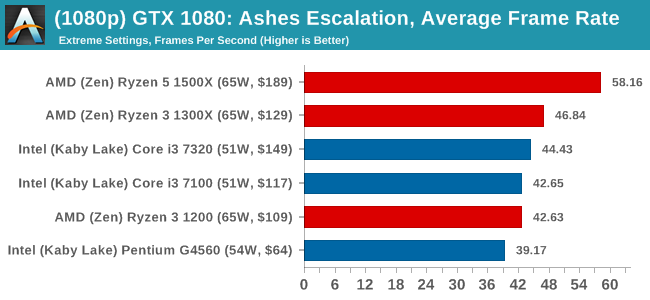
1080p

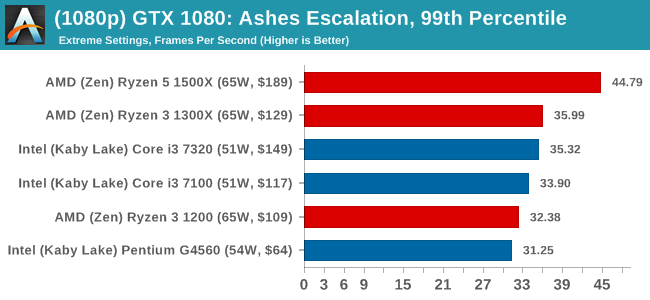
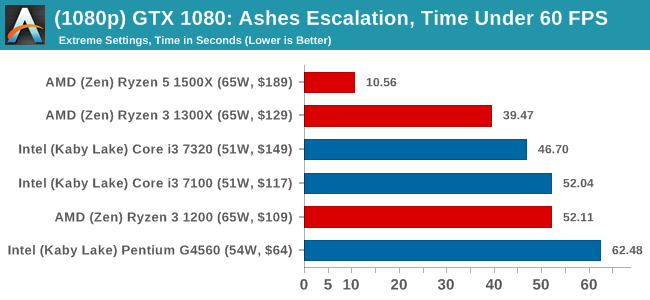
4K
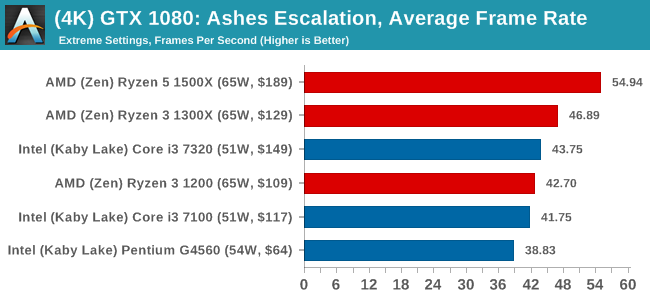
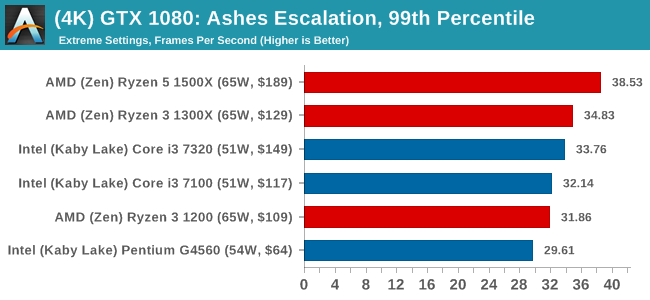
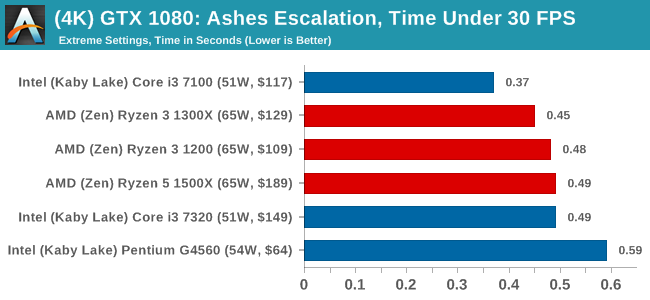
ASUS GTX 1060 Strix 6GB Performance
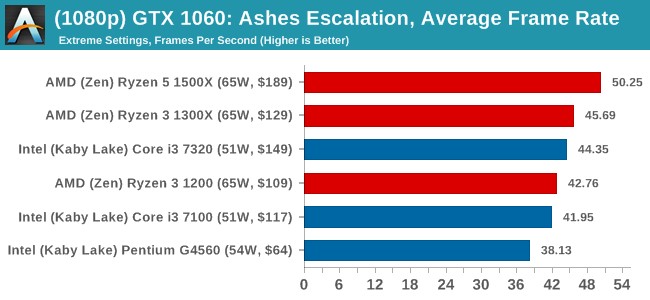
1080p

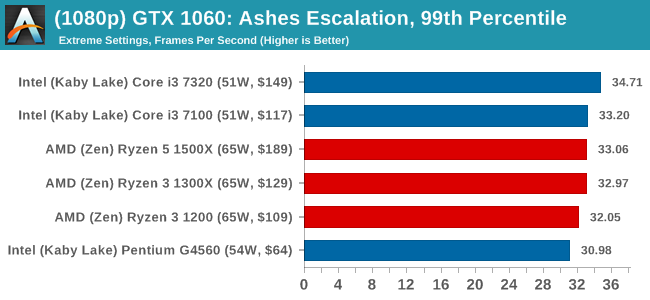
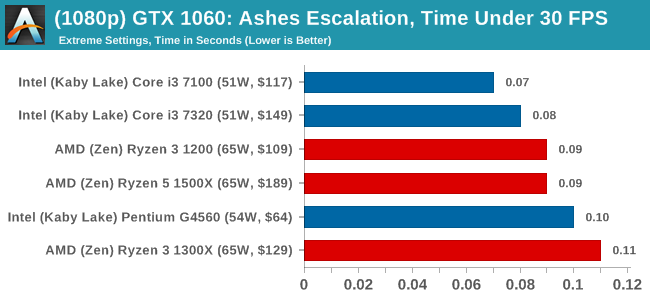
4K
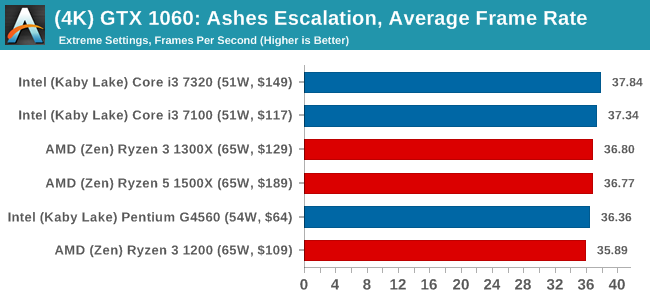
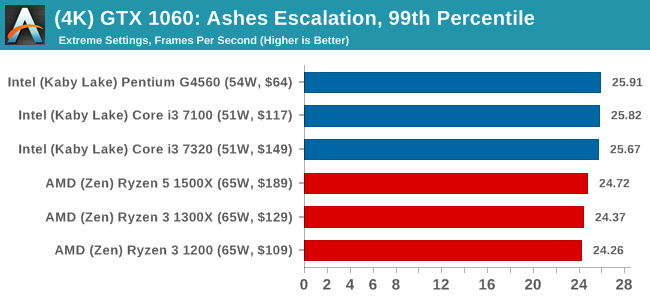
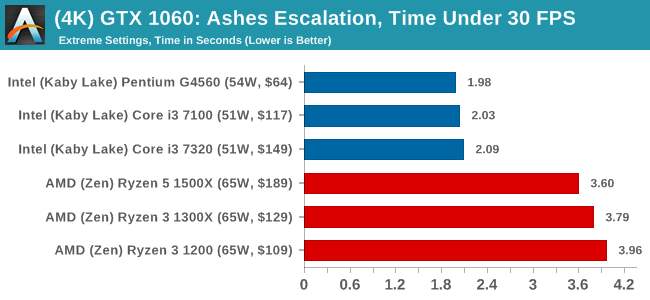
Sapphire R9 Fury 4GB Performance
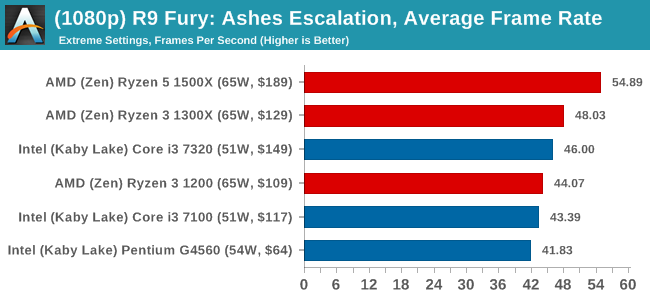
1080p

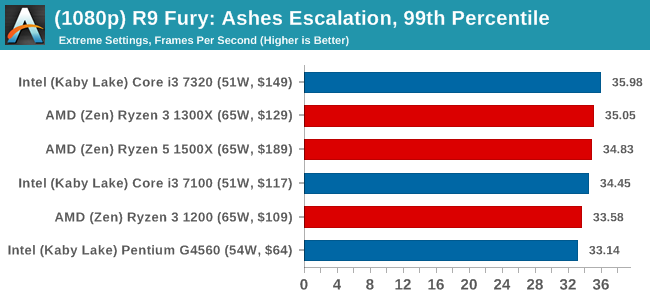
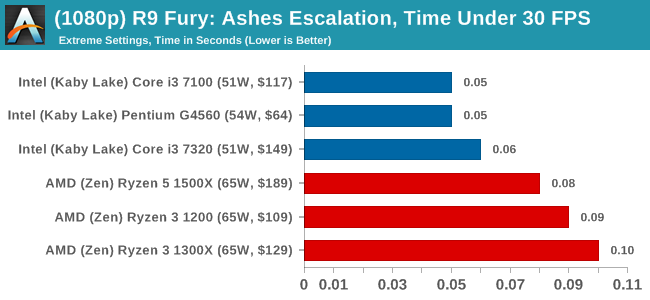
4K


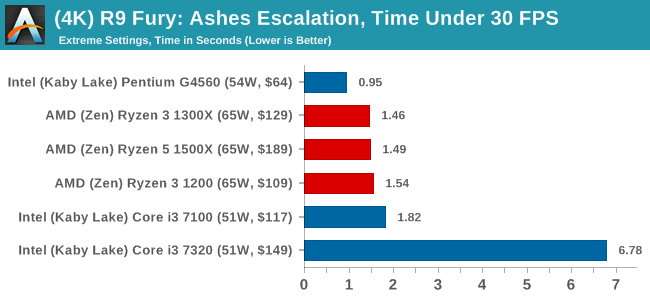
Sapphire RX 480 8GB Performance
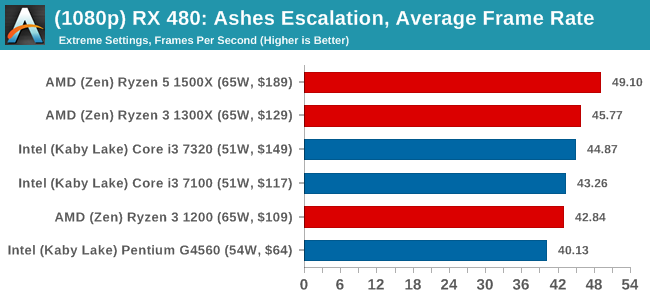
1080p

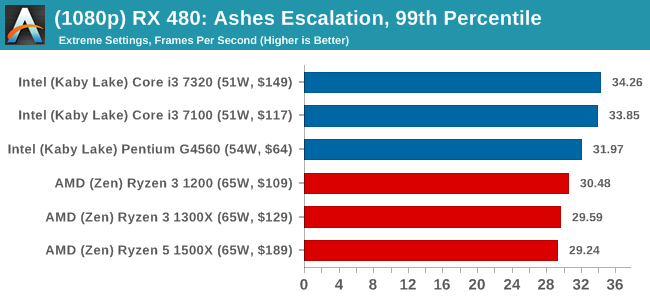
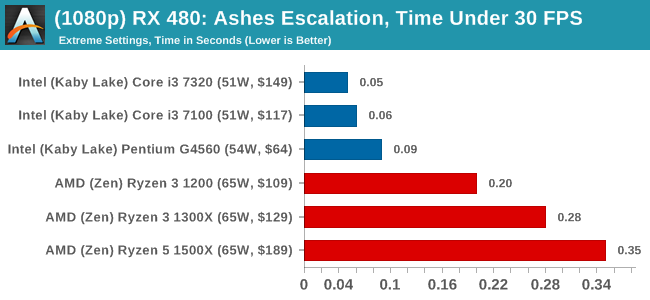
4K
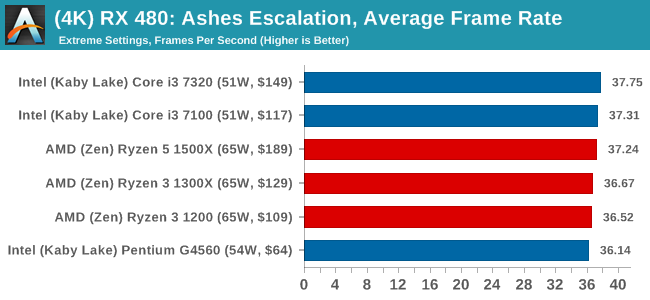
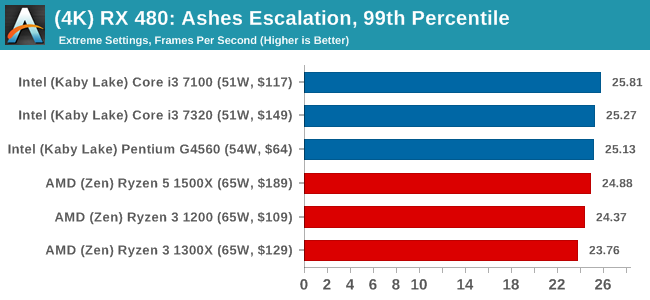













140 Comments
View All Comments
Ian Cutress - Thursday, July 27, 2017 - link
So one, overclocking is for a later review. Can't pass judgement on something that's not been tested. Other sites have certainly had more time (I get my chips 3-4 days after the US sites do, as I'm not in the US). This review was being written as the deadline passed, and is still being tested. It's not written it weeks in advance, with time to tooth comb and perfect every sentence. I've pulled an all-nighter to get to where it is now, even with some of the missing tests which are still being run. So when you say 'does not tell the full story', well not everything has been tested. I've made that abundantly clear several times in the review.Two, these chips are filling in volume at the lower end, especially in B2B where nothing is overclocked. You want me to sing the praises of a feature that we haven't had time to test for a product that's going to fill a market that won't use that feature, even though some in a different market might? If/when we get around to a pt2, I'll focus more on the enthusiast perspective. If you've read most of our CPU reviews over the past two years, most of the emphasis usually goes on out-of-the-box performance anyway.
Third, on the very first page, in black and white, it states 'The big upswing for AMD here is going to be overclocking, and potentially push the Ryzen 3 CPUs through to compete with the next one up the stack depending on stock performance.'
vanilla_gorilla - Thursday, July 27, 2017 - link
Ian, first off, great review as always and thank you. Second, you should just write up a large FAQ/disclaimer for your reviews that you can just link in the article and in comment replies. The same questions and complaints come up over and over, you've got to be tired of addressing them.DrKlahn - Thursday, July 27, 2017 - link
As I said, I understand it is for a later review. I also understand that a lot of these chips will never be overclocked. I don't want you to sing the praises of anything. I want a caveat in the conclusion that this potential exists and it impacts the value proposition. History has shown us (think the initial Radeon 290 reviews) that the first impression sticks with the reader regardless of how a product fares in the future. I have zero issues with your conclusion as an out of the box evaluation and appreciate your efforts. However your conclusion should have a caveat attached to it to call attention to everything the chip offers.mikato - Thursday, July 27, 2017 - link
I think that's fair. Here's another vote.Gothmoth - Thursday, July 27, 2017 - link
just saw your reply.... and i count on that. :-)Gothmoth - Thursday, July 27, 2017 - link
i hope anandtech will test the overcloked ryzen against the locked intels.but then... is amd paying enough fot advertising on anandtech..... :)
willis936 - Thursday, July 27, 2017 - link
There is an R7 review and now an R3 review but nothing on the most interesting segment: R5. I've seen multiple other sites say that the R5 segment is where AMD is the clear winner for all workloads. Go up or down $50 and Intel makes more sense for gaming.MrCommunistGen - Thursday, July 27, 2017 - link
http://www.anandtech.com/show/11244/the-amd-ryzen-...willis936 - Thursday, July 27, 2017 - link
I wonder why that doesn't show up when using anandtech's search feature.http://www.anandtech.com/SearchResults?q=R5
MrCommunistGen - Thursday, July 27, 2017 - link
This article doesn't show up when you search R3, and the 1800X article doesn't show up if you search R7.AMD isn't actually using R3, R5, and R7 as part of their branding for Ryzen, though I guess at least some are using that shorthand. The R3/5/7 are being used for GPU branding for some generations of discrete cards and APUs.
If you look at the top of the article underneath the author's name, you'll see what tags the article has (and thus search terms) that you could use to find it in the future. Looks like "Ryzen" or "Ryzen 3" "Ryzen 5" and "Ryzen 7" are good terms.
On the other hand, I found the link I posted above by going to Google and typing:
anandtech 1600x review